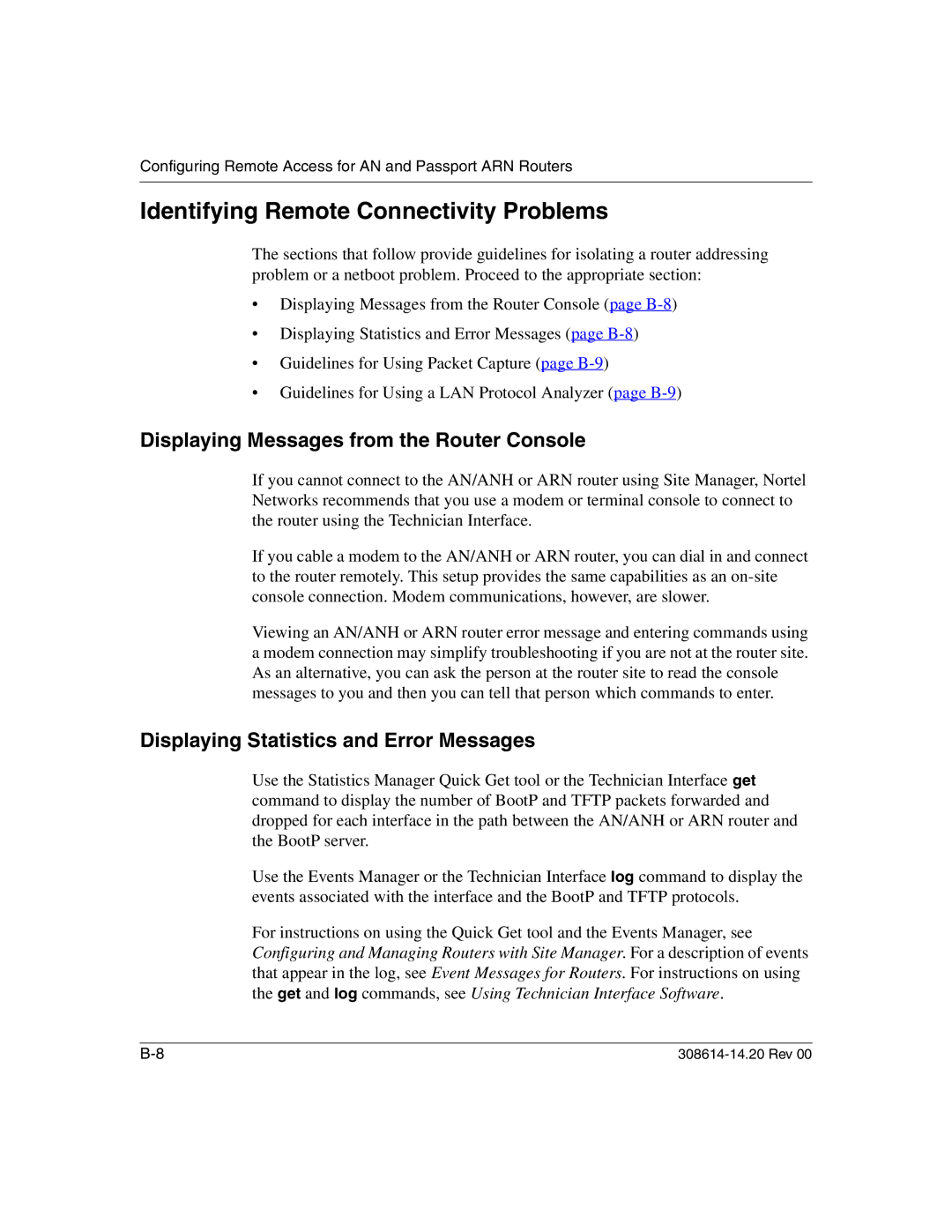
Configuring Remote Access for AN and Passport ARN Routers
Identifying Remote Connectivity Problems
The sections that follow provide guidelines for isolating a router addressing problem or a netboot problem. Proceed to the appropriate section:
•Displaying Messages from the Router Console (page
•Displaying Statistics and Error Messages (page
•Guidelines for Using Packet Capture (page
•Guidelines for Using a LAN Protocol Analyzer (page
Displaying Messages from the Router Console
If you cannot connect to the AN/ANH or ARN router using Site Manager, Nortel Networks recommends that you use a modem or terminal console to connect to the router using the Technician Interface.
If you cable a modem to the AN/ANH or ARN router, you can dial in and connect to the router remotely. This setup provides the same capabilities as an
Viewing an AN/ANH or ARN router error message and entering commands using a modem connection may simplify troubleshooting if you are not at the router site. As an alternative, you can ask the person at the router site to read the console messages to you and then you can tell that person which commands to enter.
Displaying Statistics and Error Messages
Use the Statistics Manager Quick Get tool or the Technician Interface get command to display the number of BootP and TFTP packets forwarded and dropped for each interface in the path between the AN/ANH or ARN router and the BootP server.
Use the Events Manager or the Technician Interface log command to display the events associated with the interface and the BootP and TFTP protocols.
For instructions on using the Quick Get tool and the Events Manager, see Configuring and Managing Routers with Site Manager. For a description of events that appear in the log, see Event Messages for Routers. For instructions on using the get and log commands, see Using Technician Interface Software.
|
